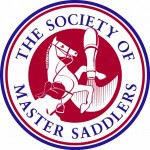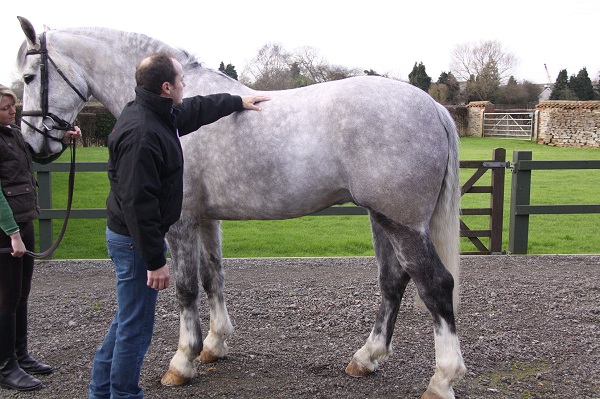Posted: 5th January 2018 | Back to news feed

Working with Your Saddle Fitter
Developing a solid working relationship with your local Society of Master Saddlers Registered Qualified Saddle Fitter is a great way to ensure you have access to regular advice and support.
With thorough communication and a clear understanding from each party to end results will lead to all horses and ponies in the yard being ridden in a saddle that fits, is comfortable and also allows the rider to perform at their best.
Today most riders recognise the important part the saddle plays in terms of welfare, comfort and success.
Whether your saddle is new or second-hand, it is important that it is fitted by a Qualified Saddle Fitter registered with the Society of Master Saddlers. Their first consideration will always be the horse. This may mean that you need to adjust any preconceived ideas you may have about your own preferences in relation to make and design.
When thinking about a visit you must plan ahead and provide the best facilities you can to help the saddle fitter to give the best possible service.
First on the list is a flat, hard surface where the horse can be stood up and run up in hand.

Next is an area where the horse can be ridden. Saddle fitting can take a considerable time and the saddle fitter is likely to want the horse owner to ride in a number of short-listed saddles, an essentially important part of the fitting procedure.
Showjumping and Cross-Country. If you are opting for a saddle designed specifically for dressage, polo or showing it is very unlikely you will be wanting to use the saddle for jumping! If you are considering purchasing a saddle that will involve jumping, it is essential to ride over a few fences.
Rider Presence. Although this will appear remarkably obvious to the vast majority of riders, it is a fact that some believe their presence isn't a necessary factor. Occasionally horses are 'shared' or ridden regularly by more than one person and, in this case, both riders should be present.
Wear something suitable. Sometimes clients are unsuitably dressed. Jeans and trainers are always inadequate and they certainly aren't the most comfortable clothes in which to try out short-listed saddles.
The Society of Master Saddlers generally cautions that the well-fitting saddle does not require the addition of anything under it with the possible exception of a thin saddle cloth. There are, however, exceptions to every rule. When there is a valid reason for using a numnah or gel pad the saddle fitter will need to allow for the addition.
Have your own stirrup leathers and girth available. The saddle fitter will be carrying girths of various types and sizes but it is a good idea to have your own available. Using your own stirrup leathers is generally more comfortable and avoids the possibility of the saddle fitter's new leathers becoming marked and therefore difficult to sell.
The saddle fitter would obviously prefer to preserve the condition of his new saddles but, in addition, the marks left on the well-groomed horse's back after removal of the saddle are significant because they indicate bearing surfaces and further identify unwanted movement.
To find your local saddle fitter and for more information visit www.mastersaddlers.co.uk or contact The Society of Master Saddlers on 01449 711642.
The Equestrian Index newsfeed is compiled from articles submitted by advertising members and expresses the opinions of those members. Watsons Directories Ltd shall not be held liable for any inaccuracies or mis-statements therein.
